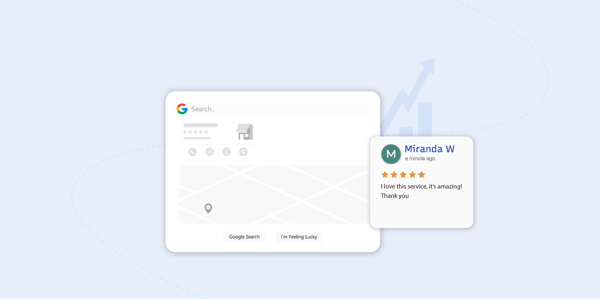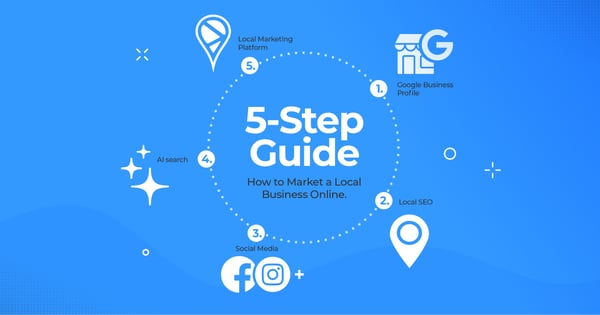Make sure you are searchable
When you are on the road and find yourself in need of filling up petrol, there’s one thing that is above everything else; proximity.
Whether you like it or not, convenience-based customer journeys mean low brand loyalty. Low brand loyalty means that you need to make sure that the performance side of things is top-notch.
.png?width=1347&height=758&name=Boost%20your%20online%20presence%20by%20structuring%20your%20listings-min%20(1).png)
High intent in Local searches
So what does this mean for your business? And how can you capitalize on it? According to a gas station marketing study, 90% of mobile searches for petrol stations result in a purchase. And 66% of these happened within the hour of the search.
Capture Local intent
This is a game of following the lead of your buyer. And unfortunately, the buyer journeys in Local Search are not happening in your owned channels anymore.
Zero-click searches - meaning that the search ends without a click that leads the buyer outside of engines such as Google, Bing, or Apple is growing year over year. We don’t have the numbers for 2022 yet, but in 2020 almost 80% of all mobile searches ended within the search engines.
This is why it’s so important to understand what channels your buyers use for search, understand what channels they use for navigation, understand what channels they use for reviews, communication, etc. Understand that, then lay out a petrol station marketing strategy for how your company can optimize to capitalize on the high intent of local searches.
If you haven’t a strategy for Local SEO and how to capture the intent of Local searches - here are some steps to help you get started.
6 steps to capture local search intent
- Location Management
This is the first step, and it can actually be done even if you have no idea about your strategy for Local Search. Data management 101. It’s kind of basic. You just need the right tech to be able to have a structured set-up and a system for cleansing and continuously maintaining your location data up-to-date. - Distribution
Some might consider distribution to be part of “Location Management”, but I would disagree. There are plenty of providers out there that do location management, but there are plenty that just distribute your information to your Google Business Profile, for example. And even though it is the most important network, it’s also just halfway if you stop there.
Distribute your location data to all relevant networks and channels that matter to your buyers. Again - knowing your buyers is key! - Optimize and enrich your Google Business Profiles
Audit your top 10 competitors and what categories they are using. Which one are you using? This is just one of many things to consider. Read more in our article on local SEO ranking factors. - Leverage customer retention
Reviews, reviews, reviews. Positive reviews can entice new customers, with one study even claiming that 76% of people trust online reviews as much as recommendations from family and friends. Learn how to leverage negative reviews from our article. - Local content
This area is booming. Local Content is growing, and it’s definitely a way to capture the high intent traffic. Are you using Google Posts? Here’s an article about how to build great content for your Google Business Profile. - Analyze and learn
Don’t forget. Constantly learn and iterate. Iterate and learn. Have a system that helps you keep accountable for how you should do this. Doesn’t have to be complex. Keep it simple.
Need more guidance to improve your local search results? We've been helping a number of international gas stations with their local SEO efforts and know exactly how you can succeed.
Contact us or check out our gas station case study.
Erik Andersson, September 15, 2022


